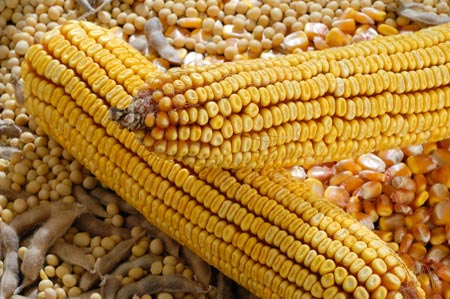 (Agrimoney) – A former Chicago Board of Trade director, and floor trader, urged smaller limits on the derivatives positions that can be held by grain speculators, cautioning over volatility caused by hedge fund deals.
(Agrimoney) – A former Chicago Board of Trade director, and floor trader, urged smaller limits on the derivatives positions that can be held by grain speculators, cautioning over volatility caused by hedge fund deals.
Ann Berg, who has also advised the US-based National Grain Trade Council and the UN’s Food and Agriculture Organization, said that the positions that speculators were allowed to take on grains were “simply too large”.
Speculative position limits, which stood at 600 contracts when she was a floor trader in Chicago, had risen to levels which were equivalent to the “import quantities of some countries”.
She quoted a position ceiling of 40,000 lots, equivalent for corn to 200m bushels, although Commodity Futures Trading Commission documents suggest a limit of 33,000 lots for corn, 15,000 for soybeans (75m bushels) and 12,000 contracts (60m bushels) for wheat.
It was “hard to think there was no influence” on the market from large speculative holdings to the detriment of the price discovery process which derivatives are intended to promote.
‘More spikes’
Matching of computer trades between funds, without the intervention of traders and reference to supply and demand information, did not help the process of price discovery.
Indeed, large sell or buy trades created the risk of a “vacuum in the system” when the market did not have sufficient opposing orders to mop up the deals, a mismatch which meant hiking volatility.
“It is more difficult for producers to make a judgment in the market because prices can move so quickly,” Ms Berg said.
And grain markets will see rising volatility, fuelled by the growing prevalance of investors who trade multiple asset classes – shares and bonds as well as commodities – further linking price moves in such markets, and meaning that ag values move in ways “which have nothing to do with supply and demand.
“Increasingly, we will see spikes up and down” in grain prices.
‘Really fooled experts’
However, she also flagged benefits to global agriculture from the establishing of grain futures exchanges, which had only come to India, for example, since legal restrictions were dropped in 2006.
The move away from regulated prices, coupled with improved technological innovation and access to credit, had allowed a “large supply response” after prices soared around 2007.
“It was something that really fooled experts,” who had thought it would take longer to rebuild world grain inventories.




